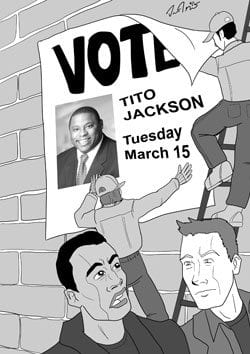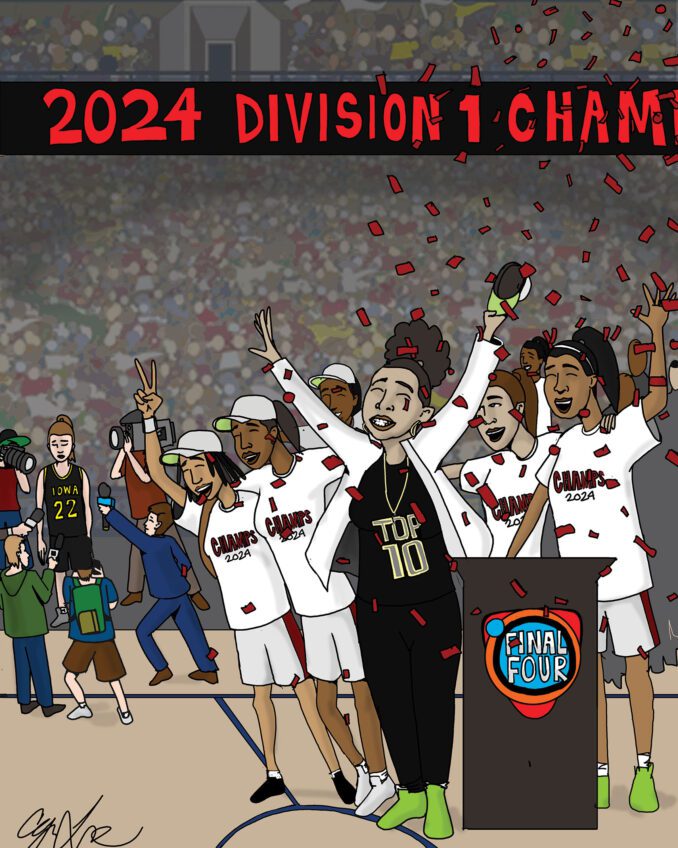
Tito for District 7
A political endorsement for Tito Jackson for District 7 city councilor is like gilding the lily. Voters in the Feb. 15 primary have already expressed their overwhelming support. In a six candidate campaign, Jackson tallied 67.3 percent of the votes.
Jackson, who is affectionately known as Tito, organized an effective and efficient campaign. He burnished those skills when he served as a tireless political director for Deval Patrick in the recent gubernatorial campaign. He had to maintain contacts with elected officials and organizations such as labor unions and social change groups. Those contacts should be helpful when he serves as a city councilor.
Voters were attracted to Tito by more than the quality of his campaign. From his teenage days he has been active in efforts to improve the community. He has been president of the Boston NAACP Youth Council, a member of the mayor’s youth leadership group and a member of the Freedom House “Project Reach.”
In college at the University of New Hampshire, he worked with the administration to create a more racially compatible environment. As a result, Jackson became the first student body president who was African American.
Voters recognize that Tito is here to serve, and smart citizens will give him that opportunity.
The diversity within
During the Jim Crow days, designation by race was a relatively easy matter. So-called Negroes would simply comply with the abusive laws and not attract the undesirable attention of the sheriff. Once those laws fell, the problem of racial identification became more complex.
During the recent presidential campaign, some African Americans were concerned that Barack Obama was “not black enough.” This criticism was not so much racial as it was cultural. Some people believed it was harmful that Obama had no history in the civil rights movement.
Fortunately, it quickly became clear that such a standard makes little sense. The civil rights movement peaked with passage of the Civil Right Act of 1964 and the Voting Rights Act of 1965. Everyone younger than 46 was not even born before those laws were passed. They all missed the call of battle.
There is now a growing awareness of the many shades of being black. Eugene Robinson, a black Pulitzer Prize-winning columnist for the Washington Post, has analyzed this issue in his book “Disintegration: The Splintering of Black America.” He points out how these sub-sets of African Americans are internally consistent and somewhat alien from each other.
Robinson has identified four separate black Americas:
“• A mainstream middle-class majority with a full ownership stake in American society
• A large, abandoned minority with less hope of escaping poverty and dysfunction than at any time since Reconstruction’s crushing end
• A small transcendent elite with such enormous wealth, power, and influence …
• Two newly emergent groups — individuals of mixed-race heritage and communities of recent black immigrants …”
Robinson’s book, published by Doubleday, then goes on to demonstrate in detail “that these four black Americas are increasingly distinct, separated by demography, geography, and psychology. They have different profiles, different mindsets, different hopes, fears and dreams.”
Despite Robinson’s careful analysis, much of America still sees a black monolith called African Americans. Marketing and advertising people still tend to prefer broad divisions of the market: Hispanic, black and Asian. Perhaps as the internet forces them to focus, advertisers will become more acquainted with sub-sets. Clearly, the $11.1 trillion of black income projected by the Selig Center for Economic Growth for 2012 will not be equally distributed in each of Robinson’s four black Americas.
Also, an understanding of natural differences among black groups should enable them to develop a solidarity on those issues that they share in common.


![Banner [Virtual] Art Gallery](https://baystatebanner.com/wp-content/uploads/2024/04/Cagen-Luse_Men-at-store-e1713991226112-150x150.jpg)



